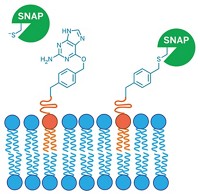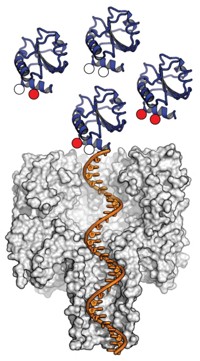Advertisement
Grab your lab coat. Let's get started
Welcome!
Welcome!
Create an account below to get 6 C&EN articles per month, receive newsletters and more - all free.
It seems this is your first time logging in online. Please enter the following information to continue.
As an ACS member you automatically get access to this site. All we need is few more details to create your reading experience.
Not you? Sign in with a different account.
Not you? Sign in with a different account.
ERROR 1
ERROR 1
ERROR 2
ERROR 2
ERROR 2
ERROR 2
ERROR 2
Password and Confirm password must match.
If you have an ACS member number, please enter it here so we can link this account to your membership. (optional)
ERROR 2
ACS values your privacy. By submitting your information, you are gaining access to C&EN and subscribing to our weekly newsletter. We use the information you provide to make your reading experience better, and we will never sell your data to third party members.
Biological Chemistry
Two new ways to get proteins into cells
Disrupting endosomes and skipping endosomes entirely ease cell entry
by Stu Borman
July 24, 2017
| A version of this story appeared in
Volume 95, Issue 30

Proteins can be important therapeutics, but in many cases their potential is limited because their polarity and large size prevent them from traversing cell membranes and entering cells, where their molecular targets may be located. Cell-penetrating peptides can shepherd proteins into cells, but in many cases the proteins are taken up by and retained in cell endosomes and thus still don’t reach the cytosol, the aqueous component of the cytoplasm. Two groups have now devised novel methods for getting proteins into the cytosol. Shiroh Futaki of Kyoto University and coworkers treat cells with an antibody and a peptide derivatized with an acidic group (Nat. Chem. 2017, DOI: 10.1038/nchem.2779). The pair enter an endosome, but the peptide disrupts the endosome’s negatively charged membrane, releasing the antibody. And Henry D. Herce and M. Cristina Cardoso of the Technical University of Darmstadt, Dominik Schumacher and Christian P. R. Hackenberger of Leibniz Institute for Molecular Pharmacology and Humboldt University of Berlin, and coworkers report a different strategy. They get a nanobody (antibody fragment) and nanobody-antigen conjugates into the cytosol or nucleus by using a technique called expressed protein ligation to link them to endosome-avoiding cyclic cell-penetrating peptides (Nat. Chem. 2017, DOI: 10.1038/nchem.2811). The techniques could ease the use of antibodies to target proteins in living cells.





Join the conversation
Contact the reporter
Submit a Letter to the Editor for publication
Engage with us on Twitter